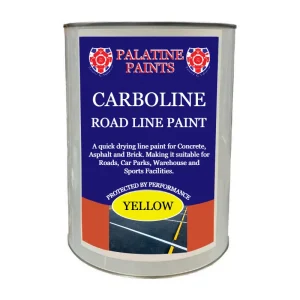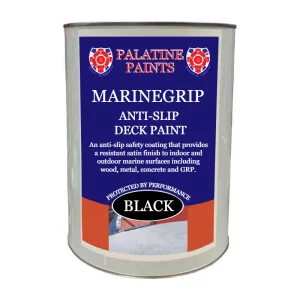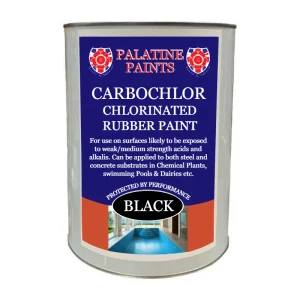All Blogs, Customer Stories, Hygiene, Weatherproofing
Chlorinated Rubber Paint Questions from Customers
Chlorinated Rubber Paint Questions and Answers
Some time ago we created a blog on Chlorinated Rubber Paint. Since then we have received some great questions about specific uses for this product so we thought it would be useful to publish them here along with our responses.
In time we hope to do this with some of the other paints we manufacture here in Leigh. We hope these help and of course, feel free to add your own chlorinated rubber paint questions (you can do this via our online chat, contact us page, or in comments below).
What can I use to paint a dog run alongside my house?
Chlorinated rubber paint will be a good choice for this project. It is easy to clean with a hose or jet wash and is resistant to the chemicals you might encounter such as dog urine. We recommend choosing a paler colour which will not absorb heat in the same way as darker shades so will help to protect dogs’ paws.
Easy to keep clean so good choice for dog runs and dog boarding areas
We can also add anti slip texture to the paint which will give additional traction to the surface and help prevent your dogs from slipping and sliding. (Especially useful for dogs with hip or cruciate problems). Apply at least two coats and ensure that the paint has fully cured before allowing the dogs to walk on the surface.
Can chlorinated rubber paint be used on a caravan shower tray?
Yes chlorinated rubber paint would be suitable as (once dry) it will seal the area effectively and has good resistance to cleaning chemicals etc. We recommend a minimum of 2-3 coats, but applying several layers in thin coats will achieve a better result. Preparation is critical for chlorinated rubber paint to be effective. In order to achieve adhesion and a suitable key for the first coat, you will need to scarify/roughen the surface prior to painting.
Ensure the surface is completely dry before applying the paint. Please also note that if you are applying Carbochlor chlorinated rubber paint internally or in enclosed spaces, it must have adequate ventilation for 3-4 days (by leaving windows or doors open).
This will allow the product to dry thoroughly and remove the smell. When applying this paint indoors, wear a face mask (see HSE guidance on choosing the right one) and take breaks every hour.
Can I use chlorinated rubber paint over a flat roof already painted with bitumen paint and then paint with solar reflective bitumen paint?
No, unfortunately bitumen paint is not a suitable surface to overpaint with chlorinated rubber paint as it can soften the bitumen painted surface. Bitumen paint does however have good waterproof and weather resistant properties. So as an alternative to chlorinated rubber paint, consider repairing any damage with roofing compound and then reapplying bitumen paint followed by solar reflective bitumen paint.
Solar reflective paint does help protect a bitumen painted roof, preventing the UV rays from damaging the surface and making it brittle. It can also help to keep heat in.
I have just built a concrete pond intended for koi carp. Do you have a paint is suitable and how often will it need re-applying?
Carbochlor would be ideal for this purpose. If the pond is recently constructed, we suggest waiting for a several months to ensure the concrete is fully cured before applying paint. Follow the instructions on the tin carefully as the paint will blister or bubble if the surface hasn’t been prepared properly or the pain is not applied correctly.
Our original blog also has some more information/tips to help you apply it correctly. Again several thin coats are better than 1 or 2 thicker coats. Wait until the paint is completely dry before filling with water.
As far as regular maintenance is concerned, the pond can be cleaned in the usual way. It may need re-painting every 4 years or so. The beauty of chlorinated rubber paint is that it can be painted over (with more chlorinated rubber paint), so ongoing maintenance is straightforward.
I have a concrete floor that I want to paint, but need chemical resistance. What do you suggest?
It really depends on the type of chemicals likely to be in contact with the surface and also the type of traffic to which the floor will be subjected. Our single pack floor paint Epoxytread will give good resistance to water, mild chemicals, oils and greases and will be suitable for medium food traffic and very occasional traffic from a forklift for example.
A two pack high build epoxy floor paint will be more hardwearing and will withstand heavy foot traffic and light vehicular traffic with resistance to stronger chemicals and water submersion.
Chlorinated rubber paint is another option to consider especially if cleanliness is crucial. It has excellent resistance to a wide range of chemicals, sewage, mould and water submersion. It can be jet washed regularly and is suitable for medium foot traffic. It’s a great choice where hygiene is vital.
Great for areas where hygiene is crucial
Note: In general, to succeed in painting a concrete floor effectively, it must be cured before applying any kind of paint. Ask us directly via phone, email or online chat if you’re unsure.
I want to stencil letters on my bike tyre walls. Is chlorinated rubber paint suitable?
Yes, this product would be suitable for you but we recommend applying a minimum of 3 coats (preferably more) to build up the letters. If the bike tyre walls are smooth/shiny you will need to abrade them to ensure the chlorinated rubber paint adheres. Of course you won’t want to compromise the surface of the tyre, so take care when doing this. Adhesion could eventually become an issue, so be prepared to re-stencil the tyres in the fullness of time.
I am looking for a flexible, anti slip paint to use in whelping kennels…
…The paint must adhere to plywood floor, upvc (dairy clad) walls and galvanised brackets and be able to cover and seal small gaps ie where floor meets walls.
Yes chlorinated rubber paint is a flexible coating and ideal for kennels. No issues with the plywood, but it can be difficult to achieve long term adhesion on UPVC. Also this is a thin film approx 40 microns when dry so would not seal small gaps. Its best feature is its resistance to acids and Alkalis
You can contact us via the following:
Email: [email protected]
Call Us: 01942 884 122
Contact form: https://www.palatinepaints.co.uk/contact-us
Live Chat Service: Press the small blue icon at the bottom left of your screen.



Just buying a garden bar the external is ply wood
Would I be able to use this to seal and protect the panels
Yes, it is would be suitable as it will leave a waterproof surface once dry. We do usually recommend 2-3 coats to ensure adequate film thickness, however due to the nature of the surface and its porosity we would advise diluting the first coat (full details are on the product listing and back label on the tin)